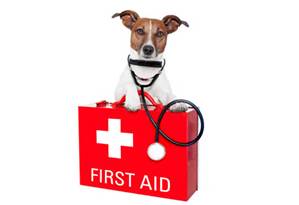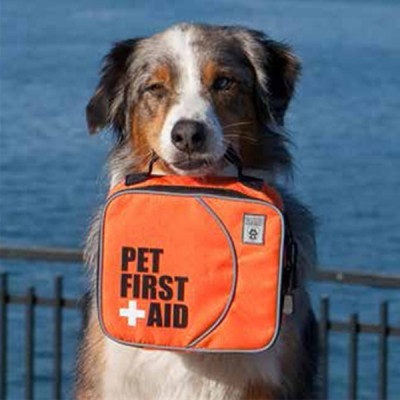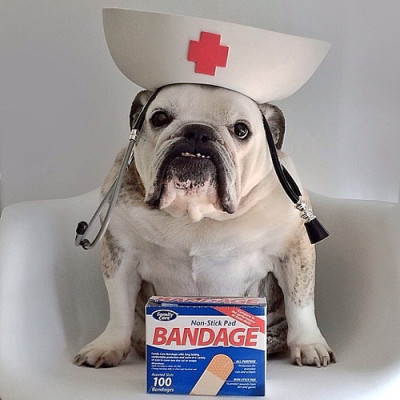Shepherd was unsure of how to perform a doggie equivalent of the Heimlich maneuver. “At first I freaked out, but then I thought, let me try this,” she says. She delivered five thrusts to the dog’s abdomen and five blows to his back. Shortly thereafter, Brutus began wheezing and coughed up the food that had been obstructing his throat. Shepherd’s training and quick thinking saved her dog’s life. It’s important for pet parents to know how to handle emergencies until they can get their four-legged friend to the veterinarian.
Pet First-Aid Awareness is important for any pet parent. Training classes are offered at various locations across the United States through the American Red Cross. If a pet first-aid or CPR course doesn’t fit into your busy schedule, keep these tips in mind to help with future pet-related emergencies. Being prepared can make all the difference in an emergency situation!
1. Keep a Pet First-Aid Kit on Hand: For pets and people alike, the most common and frequent accidents occur at home. Be sure to keep a Pet First-Aid kit in an accessible location, but more importantly, be familiar with its contents and how to use them if an emergency occurs. In addition to the standard gauze, nonstick bandages, and antibiotic ointment, your emergency kit should include emergency phone numbers for your veterinarian, animal poison control center, and the nearest 24-hour emergency veterinary clinic.
2. Be Able to Recognize an Emergency Situation: Know what is normal for your pet and be conscious of any changes in your pet’s behavior. Unusual whining, coughing, increased urinating, or irregular breathing could be symptoms that something is wrong with your pet. If you observe any of the above-mentioned symptoms contact your veterinarian immediately.
3. Take Steps to Prevent Emergency Situations from Happening: Pet-proof your house. People do this all the time for children, why not pets? Make sure medications and cleaners are out of reach and electrical cords are taped down. Keep your pet’s vaccinations and licensing current. In between your regular veterinarian visits, check your pets for changes in their health.
For more information visit: www.avma.org.
For the Best that Pet Lifestyle has to offer follow Wendy Diamond on Facebook, Twitter, and right here at AnimalFair.com!








